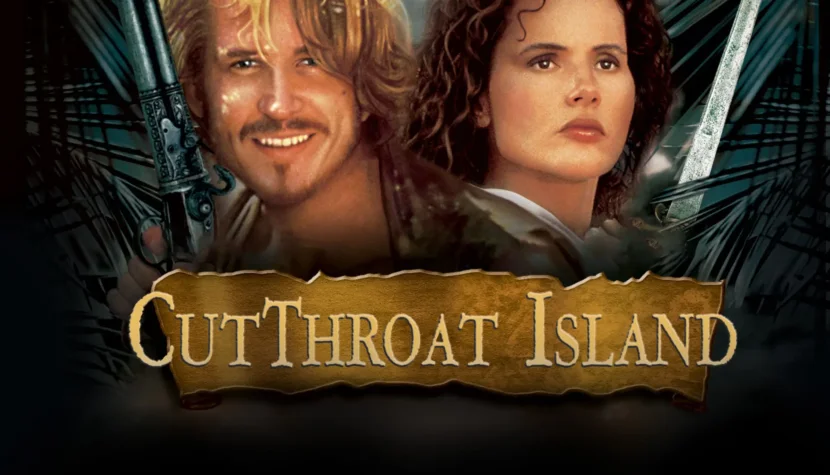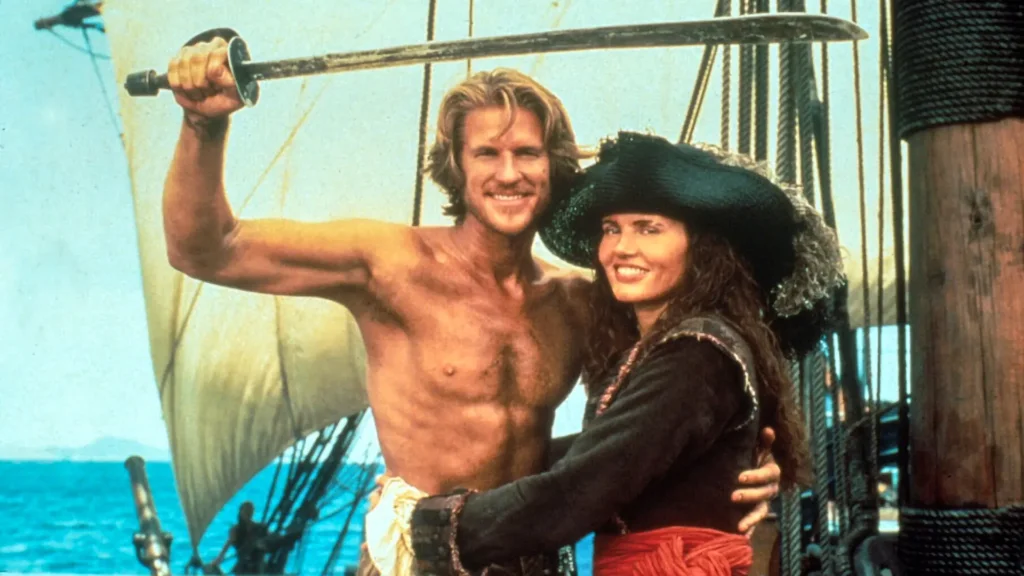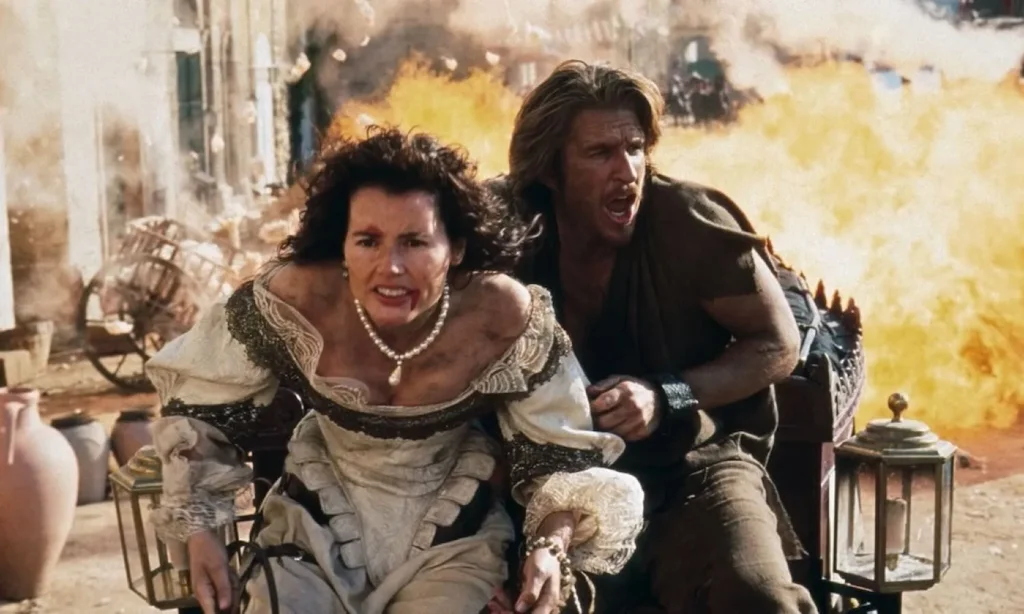CUTTHROAT ISLAND. A Great Adventure Movie Undeservedly Shrouded in a Bad Reputation

Written by Piotr Zymelka.
In the early 1990s, it seemed that Finnish director Renny Harlin was an emerging star in the entertainment cinema genre. Aside from his first films made in his homeland, Harlin briefly dabbled in horror, creating “Prison” in 1987 and “A Nightmare on Elm Street 4: The Dream Master” in 1988. At the dawn of the next decade, however, he veered towards action cinema, delivering the excellent “Die Hard 2” with Bruce Willis, followed shortly by the equally successful “Cliffhanger” with Sylvester Stallone. His next project was “Cutthroat Island,” which is still (not entirely justifiably) regarded as the film that sank the Carolco studio. For this reason, this excellent adventure movie is rarely mentioned, undeservedly burdened with a bad reputation.
Pirates had been triumphing on screens since the days of silent cinema, thanks in part to the exploits of Douglas Fairbanks in “The Black Pirate.” Later, in the 1930s, “Captain Blood” starring Errol Flynn, based on Rafael Sabatini’s excellent novel, was at one point the highest-grossing title in history (and it still holds up well today). Buccaneers continued to thrive in the 1950s (for example, “The Crimson Pirate” with Burt Lancaster), as well as in the following two decades. The first warning of an impending storm came with Roman Polanski’s “Pirates” in 1986, which, despite its beautiful scenery and the specially built replica of an 18th-century sailing ship, failed to cover up the overwhelming boredom that spilled from the screen (the greatest sin of an adventure film!). Despite this, nearly a decade later, Harlin was given a vote of confidence (and a mountain of dollars) to begin work on “Cutthroat Island.”

The result was a film that transports us to the 17th-century Caribbean, where, under the blazing sun and with a bottle of rum in hand, amid the roar of cannons, the clash of cutlasses, and the whistle of bullets, we search for lost treasure. Harlin’s work contains everything needed to provide a high-quality entertaining experience: colorful, exotic locations, majestic sailing ships proudly cutting through turquoise waters, a likable pair of protagonists played by Geena Davis and Matthew Modine (originally, the role was to be played by Michael Douglas, but he backed out), who are pursued by the villainous Dawg (a brilliant Frank Langella), a fantastic soundtrack by John Debney featuring the outstanding theme “Morgan’s Ride,” and spectacular action scenes, with the epic final sea battle standing out.
Moreover, by making the charismatic, no-nonsense woman the main character, Harlin somewhat defied the prevailing trends in Hollywood at the time (though he wasn’t the first to do so; James Cameron did it over a decade earlier in “Aliens”). Captain Morgan Adams (Geena Davis) has enough charisma to carry the film on her shoulders. The director cleverly subverts the usual formula – in “Cutthroat Island,” it’s the woman who takes the lead, while the man accompanying her, the con artist William Shaw (Matthew Modine), is just a sidekick, incidentally serving as the “love interest” of the feisty lady captain. I won’t overinterpret here, as this is simply an entertaining adventure movie, but I am curious how the film would be received if it were released today.

The failure of “Cutthroat Island” at the box office shattered the director’s career (from which he has never really recovered). Although he did make the very competent “The Long Kiss Goodnight” (also with Geena Davis) and the decent “Deep Blue Sea,” things only went downhill from there. Additionally, this failure led to a few years where no one dared to produce a high-budget film about pirates. It wasn’t until Disney with its “Pirates of the Caribbean” that buccaneers were brought back to the screen (which also wasn’t easy, as many predicted the film would be a disaster). Personally, I really like “Cutthroat Island” and always recommend it when the topic of pirate-themed films comes up. And I’m always eager to sign on to Captain Adams’ ship and set out in search of gold and precious jewels again. Just look at that wonderful movie poster (by Drew Struzan). It practically screams “Adventure” with a capital “A”! Arrrrrrr!

